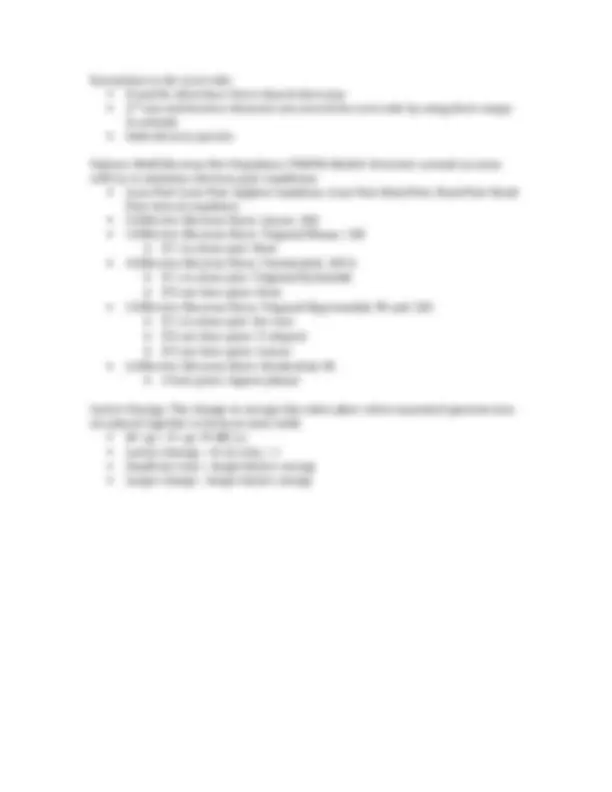



Study with the several resources on Docsity

Earn points by helping other students or get them with a premium plan


Prepare for your exams
Study with the several resources on Docsity

Earn points to download
Earn points by helping other students or get them with a premium plan
Community
Ask the community for help and clear up your study doubts
Discover the best universities in your country according to Docsity users
Free resources
Download our free guides on studying techniques, anxiety management strategies, and thesis advice from Docsity tutors
Chapter 13 Material Type: Notes; Professor: Xue; Class: General Chemistry; Subject: Chemistry; University: University of the Pacific; Term: Spring 2011;
Typology: Study notes
1 / 2

This page cannot be seen from the preview
Don't miss anything!


Chapter 13 Chemical bond: Holds atoms together Bond energy: Energy required to break bond Ionic bond: Electrons are transferred from one atom to another. Occurs between a metal and nonmetal The nonmetal completes its valence orbital shell, while the metal loses electrons. Both achieve noble gas configurations A cation is smaller than its parent atom because an electron is removed An anion is significantly larger than its parent atom Coloumb’s Law: Energy of interaction between a pair of ions: V = 2.31 E-19 J nm (Q 1 Q 2 /r) Negative sign indicates an attractive force, which means the ion pair has a lower energy than separated ions Ion size depends on # of electrons and # of protons Isoelectronic ions have the same number of electrons, so just look at the number of protons (ion size varies inversely with proton #) Covalent bonds: Electrons are shared Polar Covalent means that the electrons are not shared equally, which is due to the electronegativity o Electronegativity: ability to attract shared electrons to itself Bond polarity can be measured using dipole moments Dipole moment = ø = QR Molecules can have polar bonds, but no dipole moments: A-B-A (Linear), A-B<AA, or tetrahedral Electrostatic potential diagram: Red indicates region with most electrons, blue is the opposite Lewis Structures: Determine the total # of valence electrons, identify central and terminal atoms, write skeletal structure with one bond, then add double bonds as necessary to complete octet & valence orbitals Resonance structures: When more than one valid Lewis structure can be written. The true structure is an average between them To find out which is most correct, use Formal charge F.C. = # of electrons in free atom - # of lone pair electrons – ½ # of bond pair electrons
Exceptions to the octet rule: B and Be often have fewer than 8 electrons 3 rd^ row and heavier elements can exceed the octet rule by using their empty D-orbitals Odd-electron species Valence Shell Electron-Pair Repulsion (VSEPR) Model: Structure around an atom will try to minimize electron-pair repulsions Lone Pair-Lone Pair: highest repulsion, Lone Pair-Bond Pair, Bond Pair-Bond Pair: lowest repulsion 2 Effective Electron Pairs: Linear, 180 3 Effective Electron Pairs: Trigonal Planar, 120 o If 1 is a lone pair: Bent 4 Effective Electron Pairs: Tetrahedral, 109. o If 1 is a lone pair: Trigonal Pyramidal o If 2 are lone pairs: Bent 5 Effective Electron Pairs: Trigonal Bipyramidal, 90 and 120 o If 1 is a lone pair: See-saw o If 2 are lone pairs: T-shaped o If 3 are lone pairs: Linear 6 Effective Electron Pairs: Octahedral, 90 o 2 lone pairs: Square planar Lattice Energy: The change in energy that takes place when separated gaseous ions are placed together to form an ionic solid M+^ (g) + X-^ (g) MX (s) Lattice Energy = K (Q 1 )(Q 2 ) / r Small size ions = larger lattice energy Larger charge = larger lattice energy